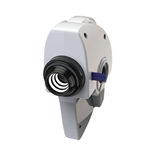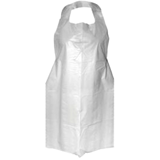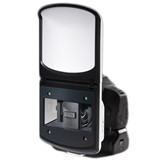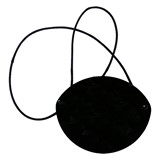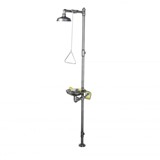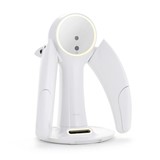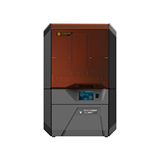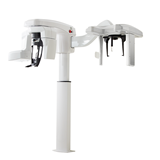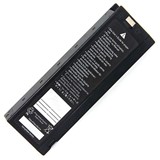A broad range of experts from around the world convened in Australia late 2005 to examine powerful new 3D technologies and techniques that may hold the key to conducting autopsies without the financial cost and cultural impact of traditional post-mortem examinations.
"New Advances in Post-Mortem Radiology", a two-day conference hosted by the Royal Australian College of Radiologists (RACR), brought together radiologists, pathologists, medical examiners, forensic scientists and legal experts to learn how to accurately pinpoint causes and manners of death without resorting to expensive, time-consuming autopsy procedures that many cultures and religions find distressing.
The conference featured papers and presentations on new radiological and virtual autopsy-related topics by a group of global luminaries in the field, including Dr. Michael J. Thali of the Institute of Forensic Medicine in Bern, Switzerland, and Commander Craig Mallak, U.S. Armed Forces Medical Examiner. The conference program included an interactive 3D demonstration from Silicon Graphics, the only visualisation solutions provider to present at the symposium. Conference sessions also examined the legal implications of virtual post-mortem procedures in court cases where the cause and manner of death are crucial to the outcome.
Attendees also heard presentations from an array of religious leaders about the post-mortem requirements and customs prescribed by different religious and cultural beliefs, including Jewish, Islamic, Buddhist, and indigenous Australian customs. Many of the world’s religions demand that the remains of deceased followers be treated with respect. Such mandates can strictly prevent invasive autopsy procedures except in rare circumstances.
"All cultures have funeral customs, and many find invasive post mortems offensive to those customs and values," said Graham Segal, OAM, a barrister-at-law and chairman of the radiology conference. "Yet most recognise that there are times when this process is necessary. This conference explored technologies that help reconcile these considerations by providing a non-invasive procedure that may be of value in many cases."
Virtual autopsy - also called Virtopsy in Switzerland - uses Computer Tomography (CT) and Magnetic Resonance Imaging (MRI) technologies to capture detailed X-rays and MRI images of the deceased’s body. Radiologists then create full 3D visualizations of the deceased, which allow pathologists, coroners and medical examiners to examine the condition of bones, tissues, organs and blood vessels for clues to the cause and manner of death.
In some cases, virtual autopsy visualisations enable pathologists to observe conditions that may be difficult or impossible to detect by traditional means. The 3D visualisations also streamline communication between forensic pathologists. And unlike physical samples and specimens, the digital records produced by virtual autopsies are permanent.
The technology also offers promise to many medical centers equipped with CT and MRI machines but lacking forensic pathologists. Scans can then be sent to pathologists who can conduct autopsies remotely. In addition, the technology promises to ease the burden of determining identity and cause of death in victims of large-scale hurricanes, earthquakes or other natural disasters, particularly in cases where bodies are badly decomposed. For Homeland Security and global anti-terrorist organisations, the technology also can significantly ease forensic and law enforcement efforts to quickly and accurately pinpoint the chain of events after a bombing or other terrorist attack.
Investments in virtual autopsy solutions pay dividends not only to pathologists, but to the legal community as well. The 3D images can be easily transferred to courtrooms. Interactive visualisations are often easier for juries to understand, and they can spare observers from having to view the graphic - some might say gruesome - photographs that result from traditional autopsies. Virtual post-mortems also provide attorneys and other court officers with a clearer understanding of the autopsy process, which can be vital when the manner of death must be established in a court case.
There are financial benefits, as well. Traditional autopsies cost an average of $4,000 each, putting significant financial burdens on grieving families or cash-strapped hospitals and municipalities. Over time, as equipment costs are amortized, virtual autopsies promise to cut the cost of autopsies.
Beyond virtual: Programs already underway
The conference spotlighted programs that are putting the new procedures to practical use today. Worldwide, nearly 1,000 bodies have been scanned for post-mortem examinations. Switzerland’s Institute of Forensic Medicine, for instance, has conducted virtual autopsies for more than five years. With more than 100 post-mortems in its database, the institute is one of the leading centers for advancing the science of virtual autopsy.
"While still evolving, these new procedures overcome many of the limits of traditional post-mortem examinations," said Dr. Michael J. Thali, the institute’s Virtopsy program manager. "For example, where typical autopsy reports involve subjective interpretations of inconclusive data, virtual autopsies in many cases can produce detailed records that show conclusively the cause or manner of death. These records can be kept intact and free of human intervention. In an era in which pathology procedures are challenged in court, medical examiners can benefit from incontrovertible evidence that backs up their findings."
Virtual autopsy procedures also help military medical examiners solve the problem of determining exact cause of death for soldiers killed in the line of duty and others who have died in the war on terror. At the U.S. Armed Forces Institute of Pathology, the Virtual Autopsy Program provides valuable information related to combat injuries sustained by U.S. Armed Forces.
The procedures deliver immediate information to the Armed Forces Medical Examiner, with Multidetector Computed Tomography (MDCT) data providing pathologists with information on the size, orientation, and location of fragments. The process gives the pathology team a pre-autopsy view of the anatomy, while MDCT data enables calculations of estimated kinetic energy sustained to the body and detailed analysis of metal fragments. Some 800 bodies have been scanned to date.
"We also use virtual autopsy procedures to examine the effects on the body of Improvised Explosion Devices, high-temperature injuries, aircraft and vehicle mishaps, drownings, and high-velocity gunshot wounds," said John M. Getz, Virtual Autopsy Program Manager in the DoD Mortality Surveillance Division of the Office of the Armed Forces Medical Examiner. Along with Mallak, Getz will present information about the U.S. Armed Forces Virtual Autopsy Program at the radiology conference. "The program can also offer supplemental information to the Department of Defense to aid in combat casualty care research and training, head and body armor research, and detailed ballistic fragment analysis."
Bedrock technology for breakthrough procedures
Afshad Mistri also presented at the conference. He is a senior manager of advanced visualisation for SGI, whose computer solutions have enabled the most detailed visualisation of the human body ever seen. Earlier 2005, SGI® visualisation systems enabled a team of California experts to combine 60,000 exceptionally detailed 2D scans of a 2,000-year-old child mummy into an interactive, 3D visualisation that allowed specialists in various fields to determine the long-deceased child’s age, sex, and probable cause of death - all without disturbing the mummy’s wrappings or casing.
SGI also has been instrumental in revolutionising crime scene investigation techniques in Italy and provides computing and visualisation solutions built on a powerful shared-memory architecture. SGI systems allow physicians, technicians and researchers to hold large data sets entirely in memory, thus avoiding the costly and time-consuming process of splitting visualisation data into small chunks to view one section at a time. And with SGI’s Visual Area Networking solutions, physicians, juries and others can remotely view and interact with 3D autopsy data from virtually any location - such as a coroner’s office or a courtroom - and using any computing system.
"The data explosion caused by next-generation scanners in turn requires world-class visualisation solutions to create realistic, interactive 3D models capable of rendering a deceased’s anatomy in accurate detail," said Mistri. "SGI is proud to collaborate with leaders in the field of post-mortem radiology to bring this valuable practice to more professionals and regions worldwide."

